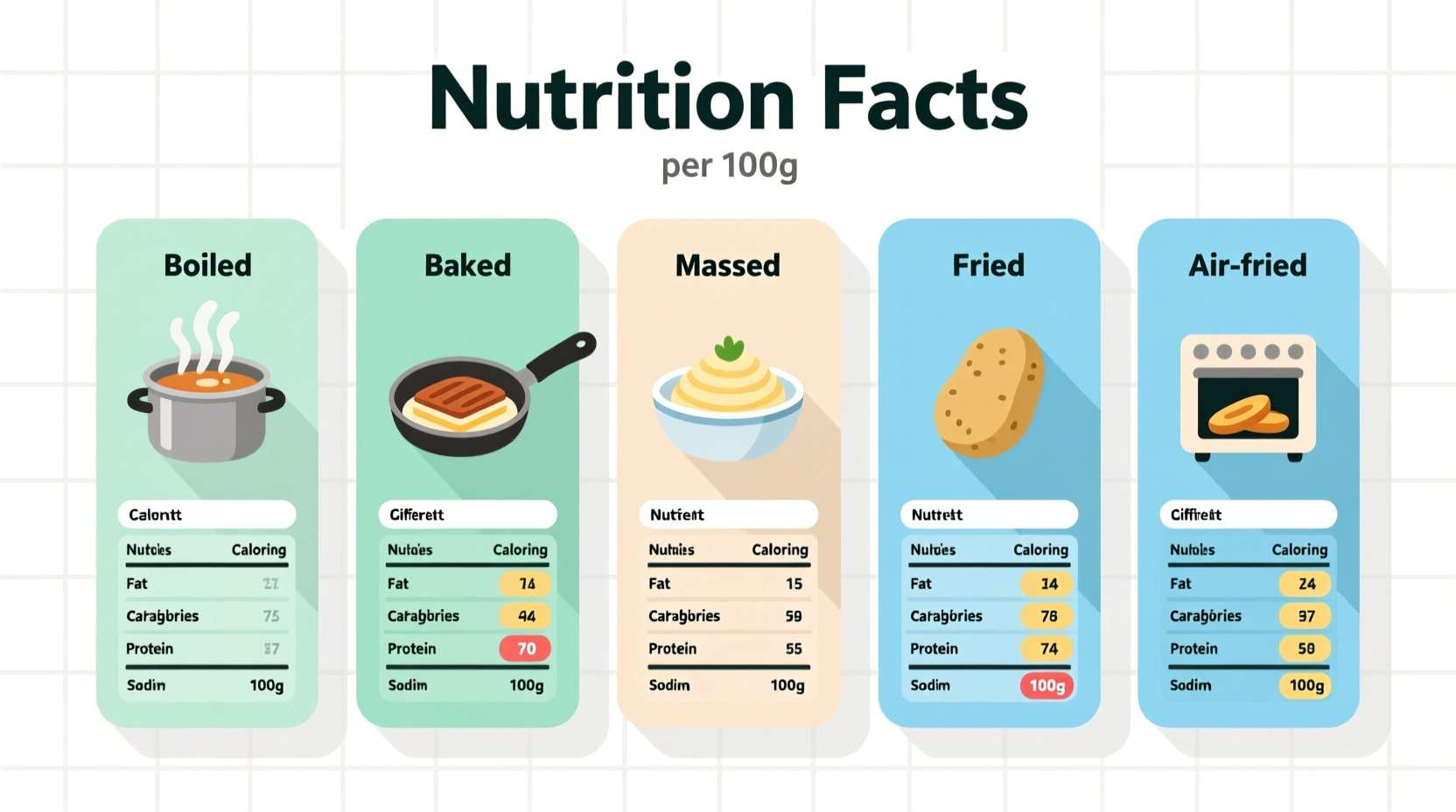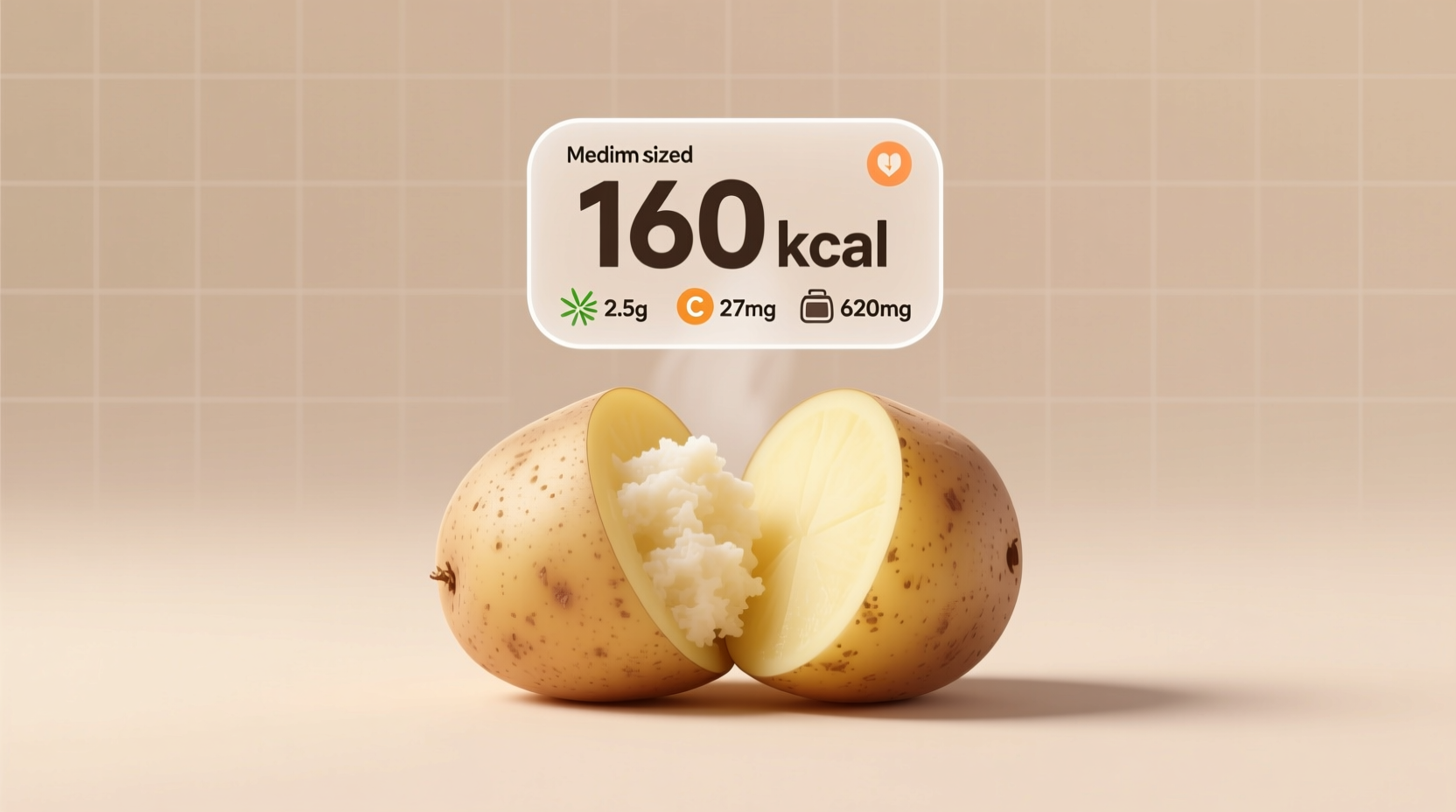Understanding potato calories is essential for meal planning and maintaining a balanced diet. Whether you're managing weight, tracking macros, or simply curious about nutrition, knowing the precise caloric content of this versatile staple helps make informed food choices.
Why Potato Calorie Information Matters
Potatoes often get misunderstood in nutrition discussions. Many people avoid them thinking they're "high calorie," but the reality is more nuanced. A plain baked potato actually contains fewer calories than a comparable portion of rice or pasta. The key factors affecting potato calories include variety, size, and crucially—preparation method.
Potato Varieties Calorie Comparison
| Potato Type | Calories per 100g | Medium Serving (150g) |
|---|---|---|
| Russet (baked with skin) | 93 | 140 |
| Red (boiled) | 79 | 119 |
| Sweet potato (baked) | 86 | 129 |
| Yukon Gold (mashed) | 95 | 143 |
| French fries | 312 | 468 |
This comparison comes from the USDA FoodData Central database, the most current nutritional reference used by dietitians and health professionals (fdc.nal.usda.gov). Notice how preparation dramatically affects calorie density—french fries contain nearly four times the calories of boiled potatoes.
How Cooking Methods Transform Calorie Content
The way you prepare potatoes significantly impacts their nutritional profile. Here's what happens during common cooking processes:
- Boiling: Minimal calorie change (water replaces some starch), but nutrients like vitamin C can leach into cooking water
- Baking: Slight calorie concentration as moisture evaporates, but retains most nutrients when eaten with skin
- Frying: Absorbs significant oil (about 10-15g per 100g of potato), dramatically increasing calories and fat content
- Microwaving: Preserves nutrients best with minimal moisture loss
According to research published in the Journal of Food Science, frying potatoes at 350°F (175°C) for 3 minutes increases their fat content from virtually zero to 10-15 grams per serving. This explains why french fries and potato chips become calorie-dense compared to their plain counterparts.

Complete Nutritional Profile Beyond Calories
While calories matter, potatoes offer valuable nutrients that make them a worthwhile part of balanced eating:
- Fiber: One medium potato with skin provides about 2-3g of dietary fiber (10% of daily needs)
- Vitamin C: A single potato delivers 28% of your daily vitamin C requirement
- Potassium: Contains more potassium than a banana (926mg vs 422mg per medium serving)
- Vitamin B6: Provides 25% of daily needs for this metabolism-supporting vitamin
The Harvard T.H. Chan School of Public Health notes that potatoes' high glycemic index often concerns people, but when consumed with protein or healthy fats, their blood sugar impact decreases significantly (hsph.harvard.edu). This context matters for understanding how potatoes function in real-world meals.
Practical Tips for Including Potatoes in Your Diet
You don't need to eliminate potatoes to maintain a healthy diet. Consider these evidence-based strategies:
- Eat the skin: Contains half the fiber and many nutrients—always wash thoroughly
- Pair with protein: Combine with lean meats, beans, or Greek yogurt to balance blood sugar
- Cool before eating: Chilled potatoes develop resistant starch, which has prebiotic benefits
- Choose healthier preparations: Opt for baked, roasted with minimal oil, or boiled instead of fried versions
- Watch portions: A single serving is about the size of your fist (150g), not restaurant-sized portions
The American Dietetic Association recommends including starchy vegetables like potatoes as part of the 2.5 cups of vegetables most adults should consume daily. Their position paper emphasizes that preparation method—not the potato itself—determines whether they support or hinder health goals.
Common Misconceptions About Potato Nutrition
Several myths persist about potatoes that deserve clarification:
- "Potatoes are just empty calories" - False: They provide potassium, vitamin C, and fiber
- "Sweet potatoes are always healthier" - Not necessarily: Both have nutritional strengths depending on preparation
- "All potatoes spike blood sugar" - Context-dependent: When eaten with other foods, their glycemic impact decreases
Research from the University of California shows that when potatoes are part of mixed meals with protein and fat, their glycemic response decreases by 30-40% compared to eating them alone. This demonstrates why considering the entire meal context matters more than focusing on single foods.











 浙公网安备
33010002000092号
浙公网安备
33010002000092号 浙B2-20120091-4
浙B2-20120091-4